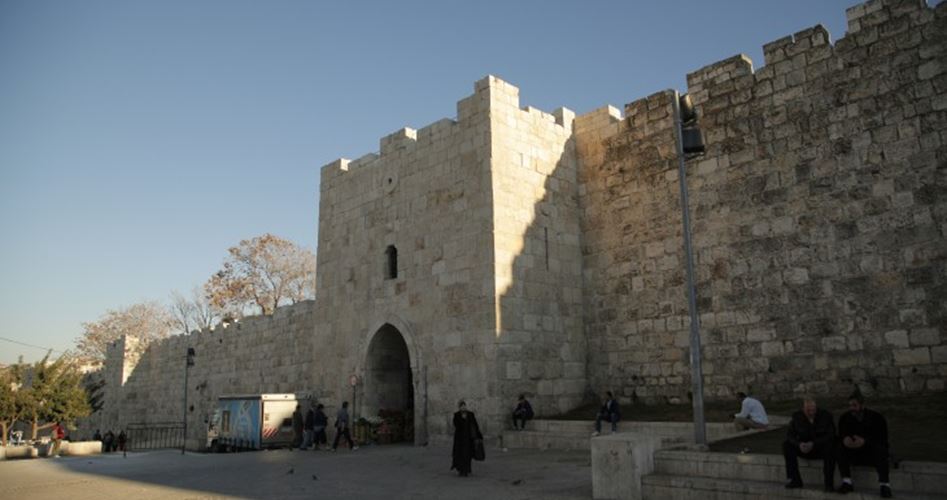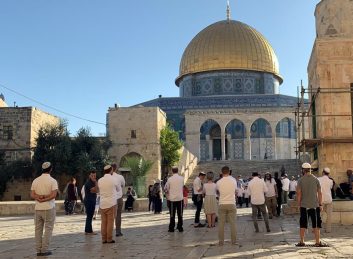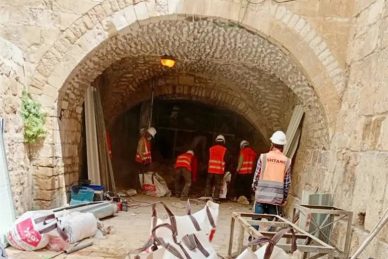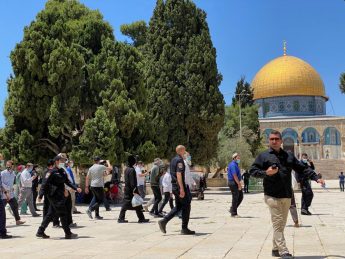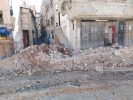Bab Al-Sahira is one of the historical gates of the city of Jerusalem. It is rich in decoration and is located at the northern wall of the city to the east of Bab al-Amud and it leads to Al-Saadia and Haret Bab Hatta.
The director of Tourism and Archeology at Al-Aqsa Mosque Yusuf al-Natsheh said that the Al-Sahira means the wide flat space which changed over time to become Al-Zahira which means flowery. The Hebrew name of it means the gate of flowers; however the design of the gate both the external and internal does not include varieties of roses or flowers to have such a name.
He adds that other names of the Gate include Herod after Herod Antipas and Medellin (the Crusader era). The size of the door of the gate is small relatively compared to the Gate of Al-Amoud and Al-Asbat Gate but its history goes back to the time of the Ottoman Sultan Suleiman the Magnificent.
The Gate’s layout
Al-Natsheh pointed out that the current structure of the Bab Al-Sahira goes back to the beginning of the twentieth century while the gate’s original path is located in the eastern part that meets the conditions of building entrances of walls in the Middle Ages (which required the existence of a broken or angled corridor). This is no longer there because the gate’s entrance is built in a straight line.
The gate’s structure consists of a small entrance aperture topped by a tapered contract and between them is a normal painting inscription which has a decorative function. The entrance leads to ditches covered by a fan vault and then leads to a passageway to the left and then into the city according to al-Natsheh.
The gate’s architecture decorations
He draws attention to the existing geometric decorations on the front of the inner door. The three geometric circles are decorated with geometrical motifs; some of them are shaped by a hexagonal decoration formed from the intersection of two equilateral triangles known as Solomon’s Seal or Star of David.
Al-Natsheh asserts that this is an authentic Islamic decoration one of the original pieces of the geometric decoration of the Islamic art and has nothing to do with what some people try to associate it with namely the slogan of ‘Israel Today.’ “It is not true at all that some tried to interpret it as talisman or slogan of King Solomon. If it was the case this sign or decoration would have been placed on Al-Amoud Gate or other gates and not on a modest internal facade and therefore this decoration is purely Islamic.”
He adds that going further to the east gives the visitor the opportunity to see the ditch that surrounded the northern wall where the ground is falling significantly which is clearer to see when stopping at the tower opposite the Rashidiya School. One could see how the ground surrounding this tower has gone up significantly since the years of the foundation of the fence. “This tower and its beautiful decorations could be seen all over the place as well as in the writings there while the ground in other parts of the wall is strikingly high.”
Al-Natsheh said that those who have the interest would be able to read the inscription written in Ottoman letters as well as the decorative elements of the stone circles and the triangular lobes by walking-up several meters eastward reaching the northeastern corner of the wall of Jerusalem and the Old City where the Laqlaq Tower is located.

